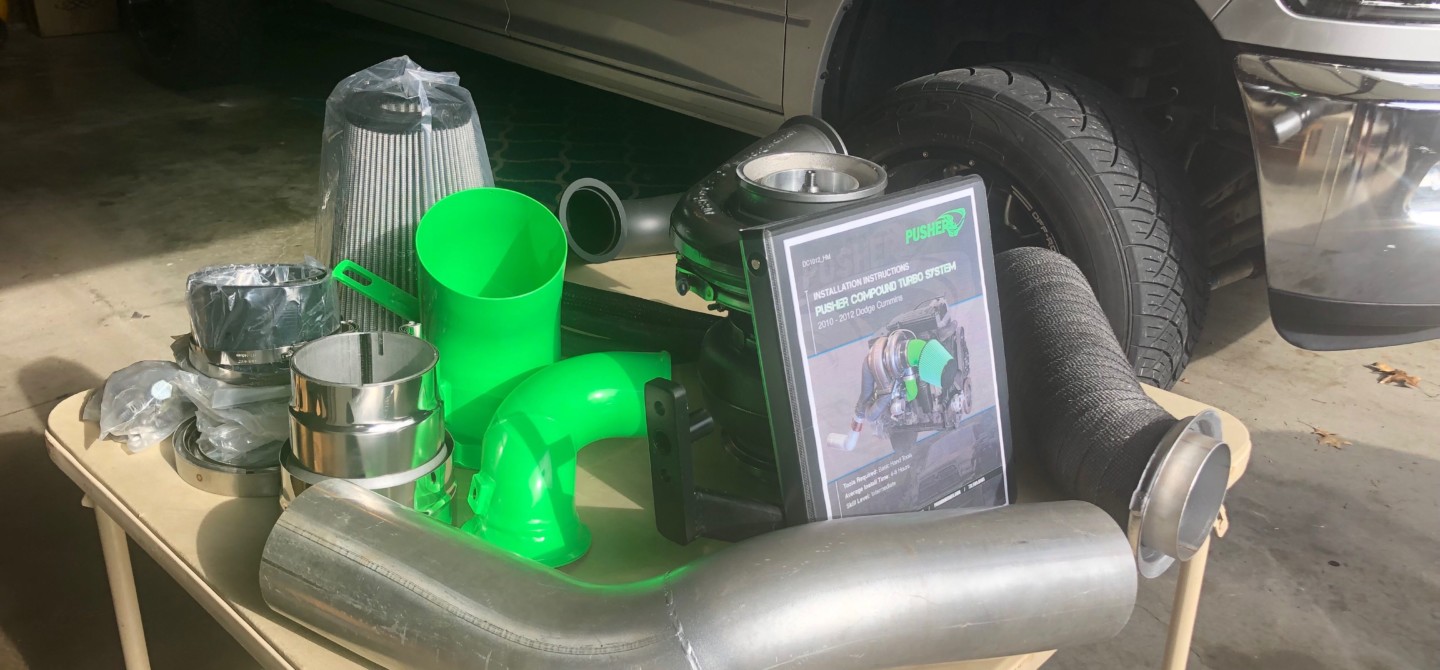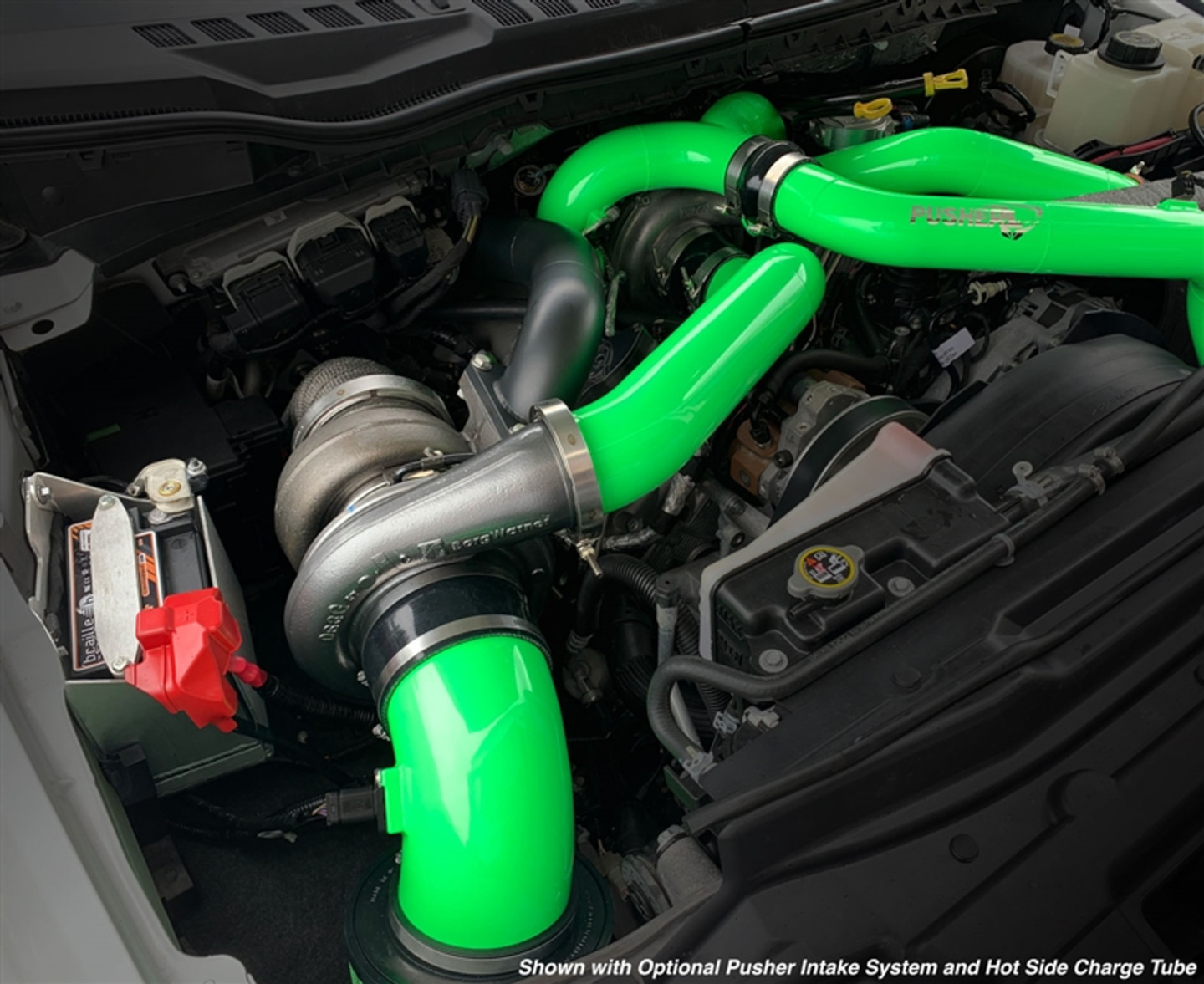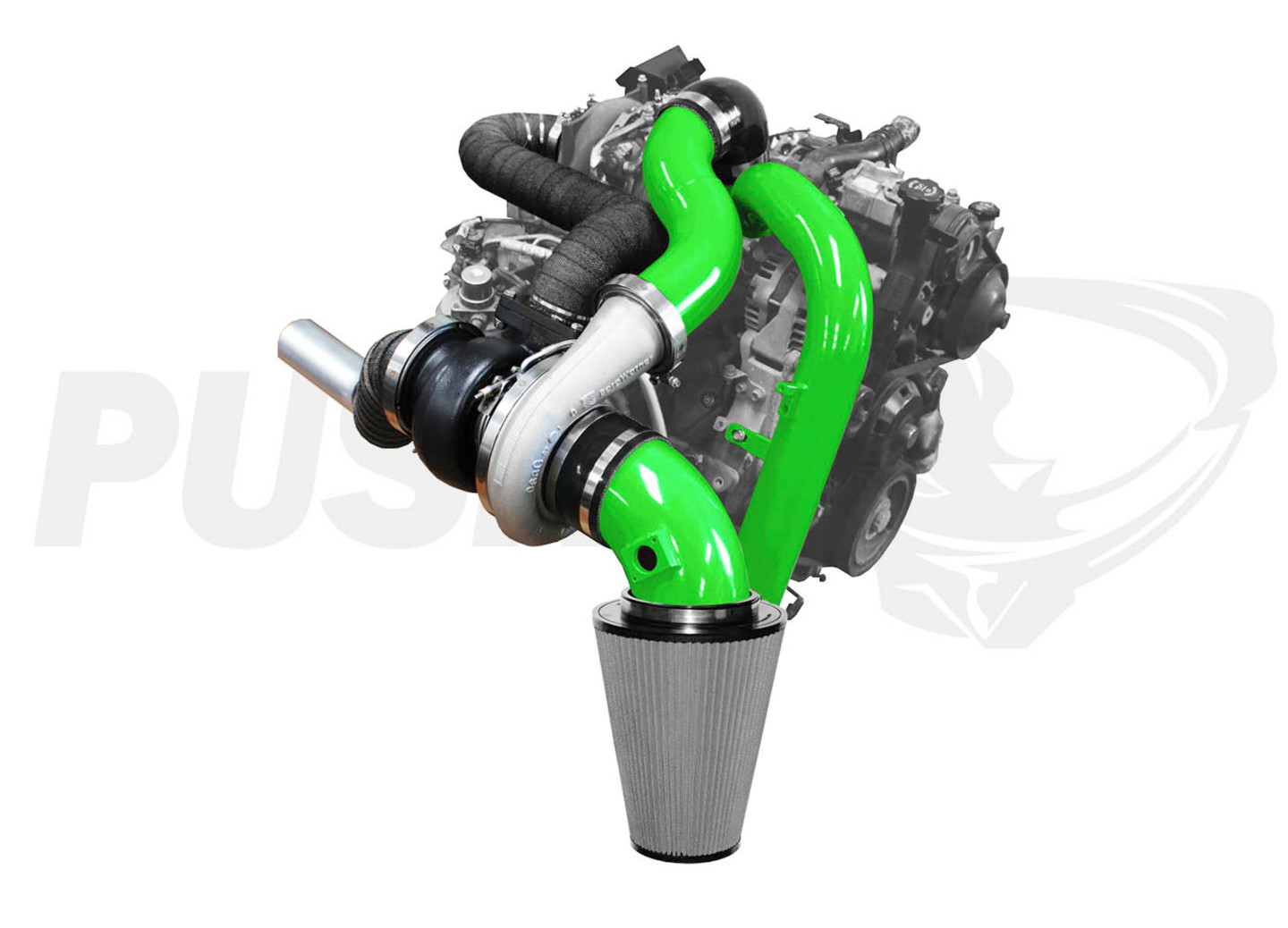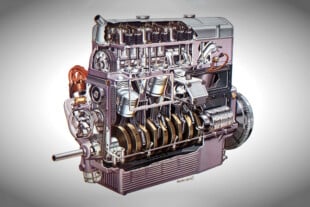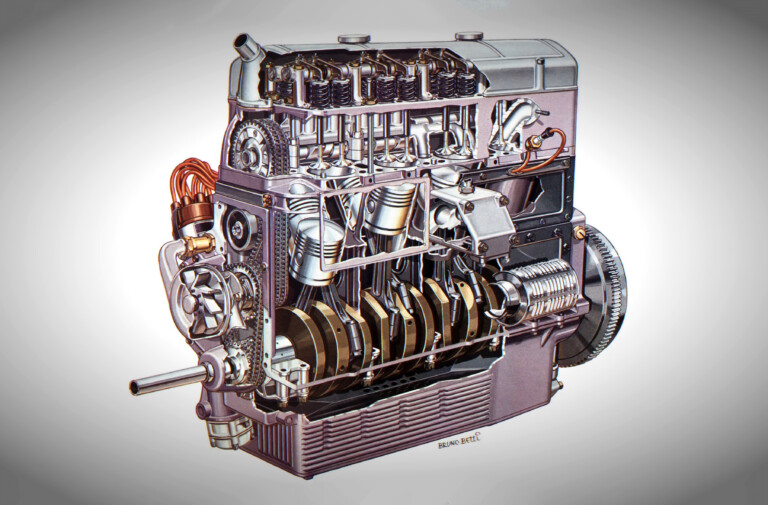I don’t know about you, but I have never heard a diesel owner complain they had too much power. Okay, maybe torque is the biggest selling point, and ever since the big three seem to be entrenched in a “torque war” to see who can make the most, enthusiasts have been looking for ways to increase the output of their engines. One of those ways is to bolt on a second turbo (compound turbo system).
But the consideration of adding a compound turbo system usually raises questions. We want to help alleviate some of the confusion. To do that, we got a lot of good information from the folks at Pusher Intakes. While we could simply reprint all of that information here, we felt it prudent to give you the highlights and let you really get the in-depth information by clicking here.
Do You Need A Compound Turbo System
First, you need to decide if a single OE-spec turbo is sufficient for what you want to accomplish. Let’s face it, if one is good, two must be better, right? You would think so, but according to Pusher intakes, A single turbo is a very simple and effective way to make good power, but (and this is a big but), they can only cover a given range of power effectively. The factory turbos on most light-duty diesels are typically small, giving the trucks great throttle response.
How The Compound System Works
But what is a compound turbo and who needs one? A compound turbo system is created by combining two turbochargers in line. One feeds the other to create double the boost. In these systems, there is a primary (small) high-pressure turbo and a secondary (big) atmospheric turbo. The primary turbo receives the exhaust flow first and given its lightweight and smaller nature, it quickly powers low engine RPM boost.
As the exhaust leaving the primary turbo begins to reach its maximum desired RPM, the wastegate opens and it is routed to the secondary turbo so your engine can continue to easily create boost in the mid-to-upper engine RPM range.
Why Not Upgrade The Factory Turbo
There are many options for upgrading a factory turbo, and we could spend all day talking about them. But at the end of the day, no single turbo can provide the same power curve that two turbos can. Will compounding my factory turbo blow it up? “No, and in fact, I believe compounds are a safeguard for your factory turbocharger,” said Jacob Allenbaugh, owner of Pusher Intakes in a previous interview. “Consider a scenario where a turbocharger might “blow up” – such as if you’re towing a heavy trailer on the highway. If you are running just your factory charger (or any appropriately sized single) it will be working overtime to move the air you need to make the power necessary to travel at the same speed. You would already be passed where that charger is efficient, and as a result not only is that single turbo living a less-than-ideal life, your engine is seeing higher EGTs and drive pressures. When you add an appropriately sized larger charger into the system you share the workload, effectively dropping the rpm of the small turbo down to where it is efficient – back to its happy (and safe) place. The same goes for racing or competition scenarios. When it comes to getting a job done – two is better than one.”
Will A Compound Turbo System Make My Truck Unreliable?
“A compound system will not make your truck less reliable. But by adding them to your truck, you’ve unlocked a whole lot of additional potential,” said Allenbaugh. “Our base compound systems provide enough air for 700 to 750 horsepower. If you decide to tackle that potential and add additional mods (fuel, injectors, etc) then it’s important to note that 700 and 500 horsepower are not the same thing. More power is more load and wear on parts, period. Setting up your truck the right way will minimize accelerated wear, but as a rule of thumb: more power wears parts faster. You can’t expect to play at 700 horsepower all the time and get the same life out of your drivetrain that you would at 500 horsepower.”
But again, it’s not the compounds that are increasing that potential wear. Your truck is going to be a whole lot safer and more reliable at the 500 horsepower mark and below with compounds than it is trying to make that same power with the factory charger.
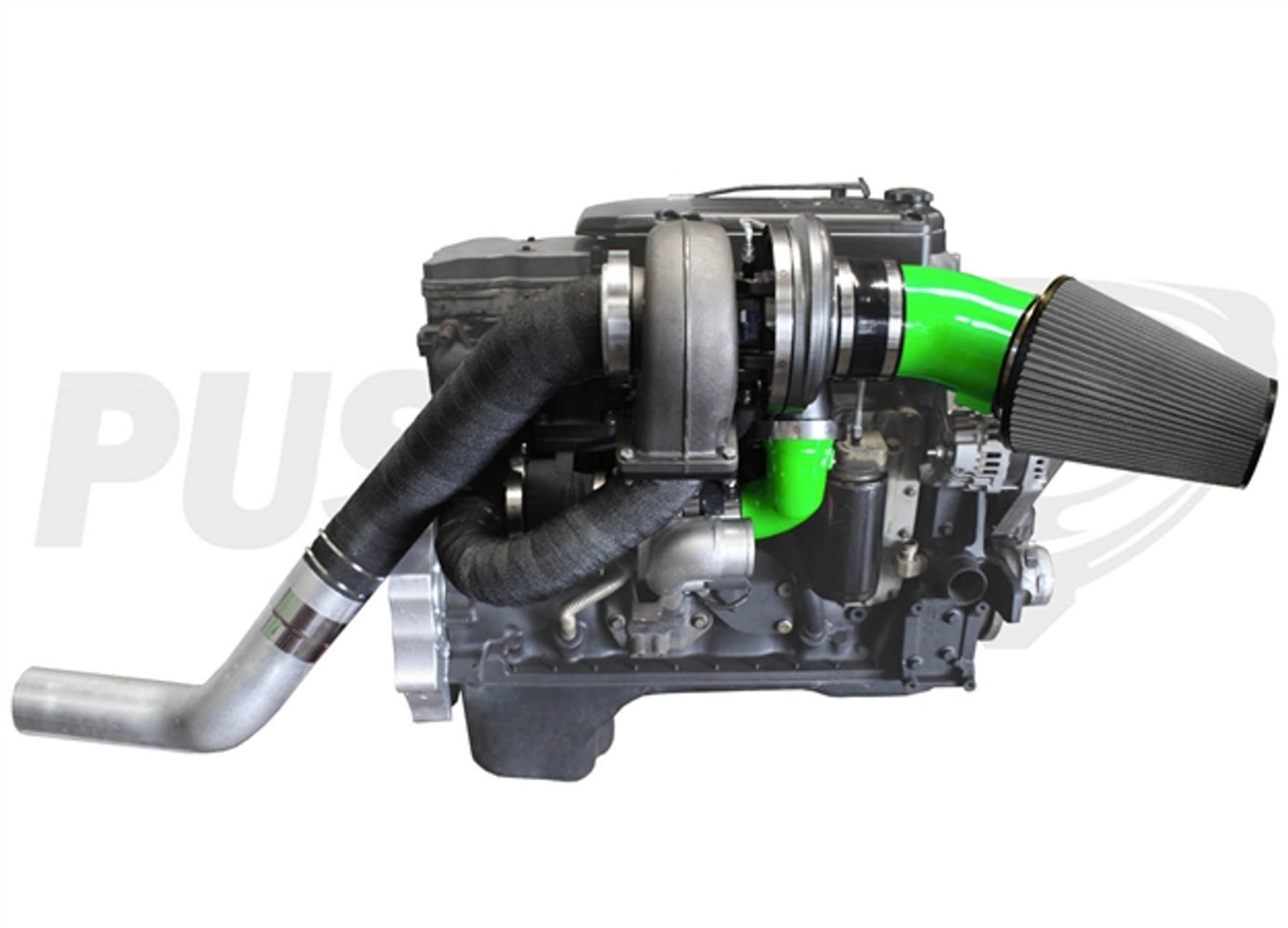
Pusher intakes’ High Mount Compound Turbo System for 2013 through 2018 Ram with a 6.7-liter Cummins.
Do Compound Turbos Require Custom Tuning
The short answer is yes. To keep it simple, if you’re just bolting compound turbos on an older truck with a fixed geometry turbo, the only change you’ll need to make is to set your wastegate to open sooner. On newer trucks equipped with a MAF sensor and variable geometry turbos, you will have to set up the MAF for the larger cold air intake and have the vanes open earlier.
Is The Install Complicated
The systems from Pusher are very straightforward and come with 15-plus pages of color instructions with pictures. They have all been designed to afford the DIY’er the ability to install one in their driveway. If you have prior experience working on turbo systems, you can expect an install time of 6 to 8 hours — more or less.
What Does A System Cost
The cost really can vary depending on the setup and vehicle. For instance, a complete Cummins-specific system starts in the low $3,000 range, the Duramax systems are in the low $4,000 range, and the new Power Stroke system should be right at $5,000. Basically, if you’re looking at a turbo upgrade and an upgraded single turbo with a good track record is in the $2,000 range, and a single turbo system like a second-gen swap for a Cummins is in the $3,000 range – it’s really hard to justify that over a compound system considering the massive differences in performance and benefits.
If you’re considering the addition of a compound turbo system in your truck, now is the time to take a look at Pusher Intakes to learn more about what’s involved and how they can help you make the most of your upgrade. You can click here if you want to read more about an installation.


